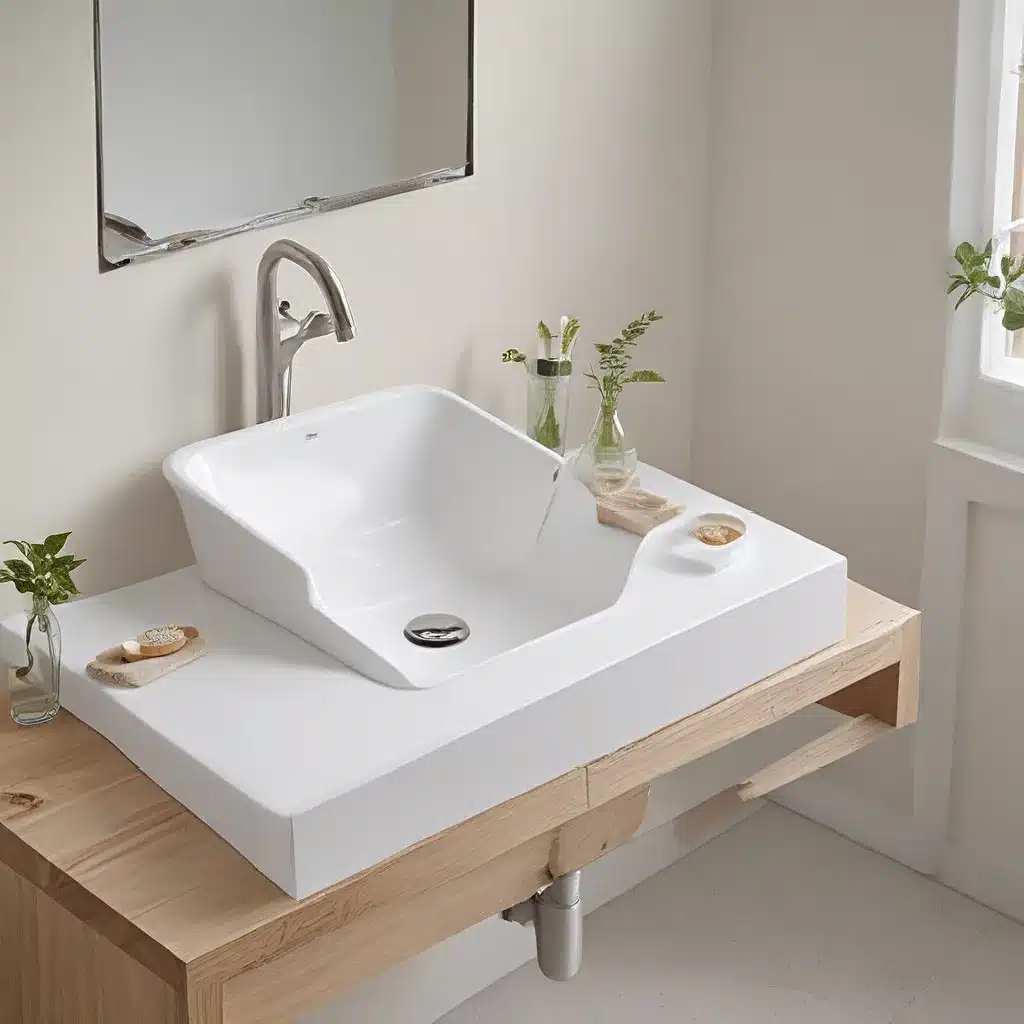
In the ever-evolving world of home design, the humble washbasin has undergone a remarkable transformation. Gone are the days of utilitarian fixtures; today, washbasins have emerged as a prime canvas for creativity, functionality, and environmental consciousness. As homeowners and designers alike seek to reinvent the bathroom experience, the choice of washbasin has become a critical decision that can make or break the overall aesthetic and sustainability of a space.
Embracing Sustainable Sink Solutions
The COVID-19 pandemic has served as a powerful reminder of the urgent need to address global sanitation challenges. As the world population continues to grow, the demand for safe and reliable sanitation solutions has become more pressing than ever. Recognizing this, innovators and researchers have embraced the challenge to reinvent the toilet and, by extension, the washbasin.
A decade of innovation has yielded hundreds of new sanitation solutions that aim to prevent illness and death caused by unsafe sanitation practices. These innovative approaches move away from the traditional reliance on water-intensive sewer systems and treatment plants, instead focusing on waterless or low-water alternatives that can be implemented in a wide range of contexts.
At the forefront of this movement is the Generation 2 Reinvented Toilet, a low-cost solution being developed by a team of researchers led by Dr. Shannon Yee at the Georgia Institute of Technology. This innovative design is poised to transform the lives of billions of people who currently lack access to safe and reliable sanitation.
Washbasin Materials: Exploring Sustainable Options
As homeowners and designers seek to create more sustainable bathrooms, the choice of washbasin materials has become increasingly important. Traditional options like porcelain and ceramic have long been the go-to choices, but the market is now brimming with innovative eco-friendly materials that offer both aesthetic appeal and environmental benefits.
Sustainable materials such as recycled glass, stone composites, and solid surface have emerged as popular alternatives, providing durable and visually striking options for the modern bathroom. These materials not only reduce the environmental impact of traditional manufacturing processes but also offer enhanced durability and customization capabilities.
When selecting a washbasin, it’s important to consider factors such as water efficiency, maintenance requirements, and overall sustainability. Homeowners and designers should research the unique properties and environmental footprint of each material to make an informed decision that aligns with their personal values and the overall design goals of the space.
Washbasin Design: Blending Form and Function
In the realm of bathroom design, the washbasin has evolved from a mere functional necessity to a statement piece that can elevate the entire aesthetic of the space. Contemporary design trends have pushed the boundaries of traditional washbasin shapes, materials, and configurations, offering homeowners and designers a wealth of options to explore.
Unique design styles ranging from the modern and minimalist to the traditional and ornate can be found in bathrooms across the five boroughs of New York and beyond. These diverse design approaches showcase the versatility of the washbasin as a canvas for self-expression and personalization.
Beyond aesthetics, the functionality of the washbasin is also a crucial consideration. Thoughtful design can enhance the user experience, incorporating features such as built-in storage, integrated faucets, and dual-basin configurations to optimize the available space and meet the needs of the homeowner or commercial client.
When selecting a washbasin design, it’s essential to strike a balance between form and function, ensuring that the chosen fixture not only complements the overall bathroom aesthetic but also provides a seamless and efficient user experience.
Installation and Maintenance Considerations
Proper installation and maintenance are key to ensuring the long-term performance and optimal use of a washbasin. Whether undertaking a DIY project or working with a professional contractor, homeowners and designers must consider factors such as plumbing requirements, drainage systems, and surface care.
Undermount, drop-in, and vessel style washbasins each have unique installation needs, requiring careful planning and execution to ensure a secure and leak-free fit. Proper sealing and caulking techniques are crucial to prevent water damage and maintain the aesthetic integrity of the installation.
Ongoing maintenance of a washbasin involves regular cleaning, stain removal, and surface care. Depending on the material, homeowners may need to employ specialized cleaning products and techniques to preserve the shine and luster of the fixture over time.
By understanding the installation process and maintenance requirements of different washbasin types, homeowners and designers can make informed decisions that ensure the longevity and seamless integration of the fixture within the overall bathroom design.
Elevating the Bathroom Experience
As the bathroom evolves from a purely functional space to a sanctuary of self-care and relaxation, the role of the washbasin becomes increasingly important. By embracing sustainable sink solutions, exploring innovative materials, and incorporating thoughtful design, homeowners and designers can transform the humble washbasin into a centerpiece that elevates the entire bathroom experience.
Whether you’re remodeling an existing bathroom or designing a new space, the washbasin offers a unique opportunity to reinvent the way we think about and interact with this essential fixture. By considering the environmental impact, aesthetic appeal, and functional benefits of the washbasin, you can create a bathroom that not only meets your practical needs but also reflects your personal style and commitment to sustainable living.
Ultimately, the reinvention of the washbasin is a testament to the power of innovation and the human desire to continually improve the spaces we inhabit. By staying attuned to the latest design trends, material advancements, and sustainability initiatives, you can ensure that your bathroom’s centerpiece – the washbasin – becomes a shining example of what’s possible when form, function, and environmental consciousness converge.

